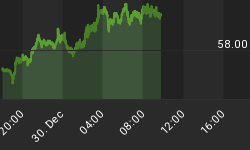With the Federal Reserve talking about tightening policy and low rates still dominating the conversation overseas, it is prudent to keep an eye on foreign markets. While there is no doubt that central banks play a major role in investment outcomes, we cannot overlook the economic side of the coin. From Reuters:
European and Chinese factories slashed prices in January as production flatlined, heightening global deflation risks that point to another wave of central bank stimulus in the coming year. While the pulse of activity was livelier in other parts of Asia -Japan, India and South Korea - they too shared a common condition of slowing inflation.
As shown in the weekly chart below, China (FXI) has been showing leadership in the emerging markets (EEM) space.

Despite the recent QE announcement by the European Central Bank, China still has the upper hand relative to Europe (FEZ) from a weekly perspective.

In terms of adding some foreign diversification to the mix, China has had trouble breaking out convincingly relative to U.S. stocks (SPY).

Another issue is long-term resistance for China (FXI). In 2010, China failed near the blue lines below; it has struggled recently in the same area. A weekly close above the recent peak of 43.86 for FXI would improve the outlook for Chinese stocks and foreign stocks in general.

How About A Currency-Hedged Foreign Position?
This week's stock market video takes a look at the good, the bad, and the ugly in the equity markets. Currency-hedged foreign stock ETFs are covered at the 13:06 mark.
Investment Implications - The Weight Of The Evidence
U.S. stock market bulls have little margin of error. If support can hold in the coming days, the bullish case may regain some traction. From a bearish perspective, each successive break of the levels shown below would increase concerns and the odds of a more prolonged correction.
















